What Should You Do With a Torn PFD? The Personal Flotation Device (PFD) is safety equipment commonly used by kayakers and paddlers to keep them afloat in the case of an emergency situation such as capsizing of the kayak or canoe.
Over the years, the use of PFDs has become more common, and they have grown to become a necessity.
To fulfill their job, PFDs should be in good condition. Any tear or deformity can compromise its function, and it will no longer be useful.
However, if your PFD ends up getting torn, there are multiple ways to fix them so that they can be temporarily reused.
Table of Contents
What Should You Do With a Torn PFD?
If your PFD’s fabric is torn, or the webbing has been damaged, repair it. You can quickly mend a superficial tear by ironing on a patch. Take care not to cause more tears while patching. But, if your PFD has multiple tears and the internal device has been damaged, replace it with a new one.
Identifying Tears in PFDs
Before using your PFD, it is recommended to scrutinize it for any tears. You can do this by inspecting for any tears or rips in the jacket’s outer fabric.
It is essential to make sure that you inspect every part of the jacket, including the zips, webbing, and buckles.
In addition, pull the straps to ensure that they sustain strength under pressure.

If you use an inflatable life jacket, it is better to inflate it using a mouthpiece the night before. In the morning, the jacket should be adequately inflated if it has no holes or tears.
If it isn’t inflated, then it’s likely that the air leaked through any present rips.
Ways to Fix Tears in the Outer Fabric of a PFD
Have you snagged your PFD? Don’t you worry, as there are various ways for you to repair the outer fabric of your PFD.
It is noteworthy to mention that these remedies will only work temporarily. Hence if you have torn your PFD, it’s better to get a new one soon.
Let’s get into those remedies.
1. Use a New Patch
Patchwork is one of the most feasible ways of fixing a tear in your PFD. It is not cost-effective but also saves time.
Many paddlers find patchwork a real-time solution in the event of any mishap.
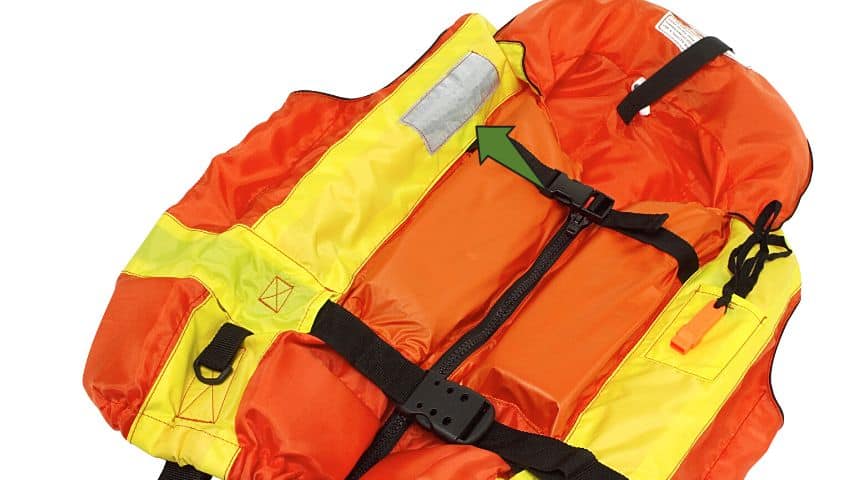
However, patching does not apply to all situations. Certain factors should be considered before looking towards patchwork as a solution.
The most factor to note is that the tear should be very deep. A deep tear will damage the internal gear, and such a deformity cannot be fixed through patchwork.
Moreover, it is best to let a professional perform the patching.
Patching should be done so that it does not harm the internal gear and, at the same time, fixes the tear on the outer fabric.
There are some associated problems when it comes to patching a PFD. It is possible that mending a tear might actually result in more new tears if not done in the correct manner.
If there are too many tears, the PFD is rendered useless.
2. Repair PFD with Duct Tape
If your PFD has superficial tears, then it is best to cover the tears carefully with duct tape.
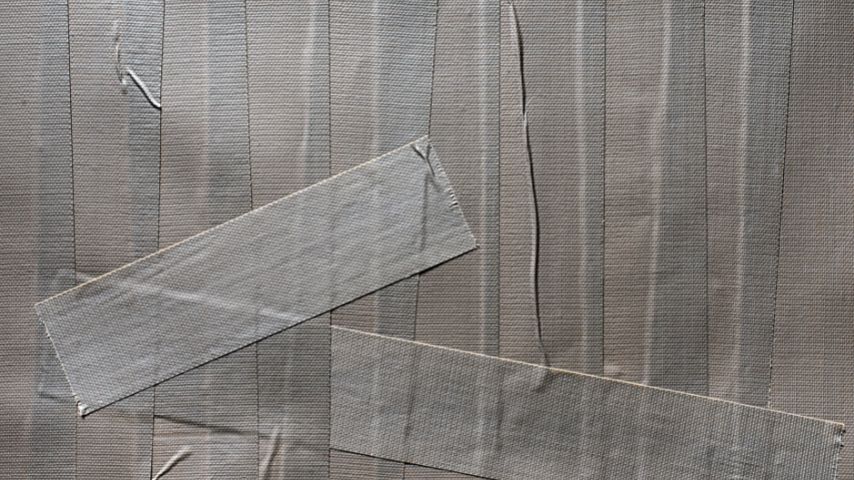
Make sure to use the duct tape with appropriate care such that it does not end up causing more tears.
3. Replace PFD
As mentioned earlier, if your PFD has too many tears, it is time to replace it with a new one.
There is a pressing need to replace the PFD when its function has been compromised, as, in any uncertain event, it will not be able to do its job.
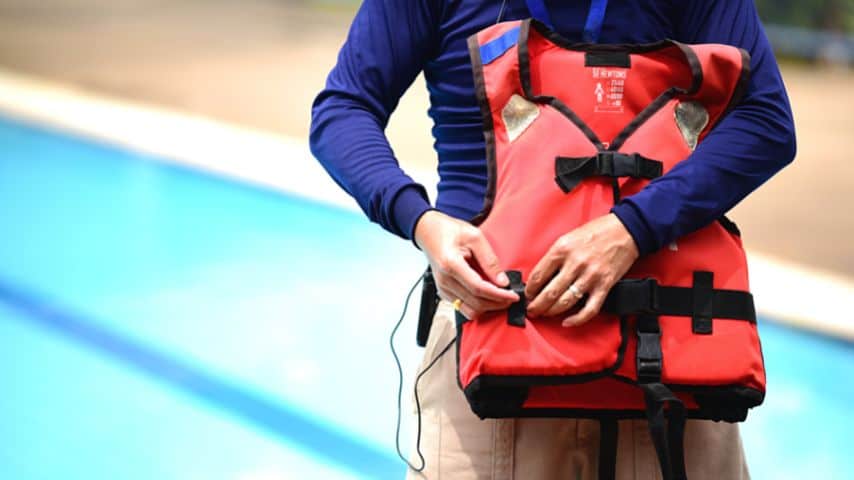
If you wish to be safe in case your boat gets capsized, it is best to be precautionary beforehand and get a new PFD instead of wearing a torn one.
Preventative Measures for Keeping PFD Safe from Damage
Now that we have discussed possible ways of repairing tears in your PFD let’s discuss some preventative measures to take beforehand to prevent any tears or rips from occurring.
1. Avoid Placing PFDs Under Direct Sunlight
Any exposure to direct sunlight for extended periods causes UV rays to seep into the fabric of the PFD and degrade its quality.
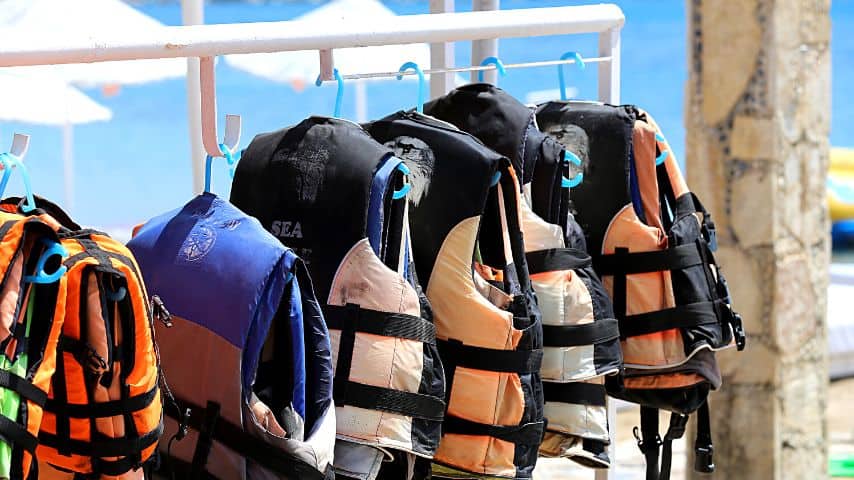
It is crucial to avoid placing your PFD in direct sunlight if you don’t want its quality to diminish over time.
2. Store in a Cool, Dry Place
A follow-up preventative measure of the first one — it is recommended to store your PFD in a cool and dry place where it does not receive scorching sunlight.

3. Hang your PFDs
Many paddlers make the mistake of storing their PFD on the floor or a dirty shelf.
This exposes the PFD to the potential risk of getting ripped. Hence, it is a better alternative to hang your PFDs.
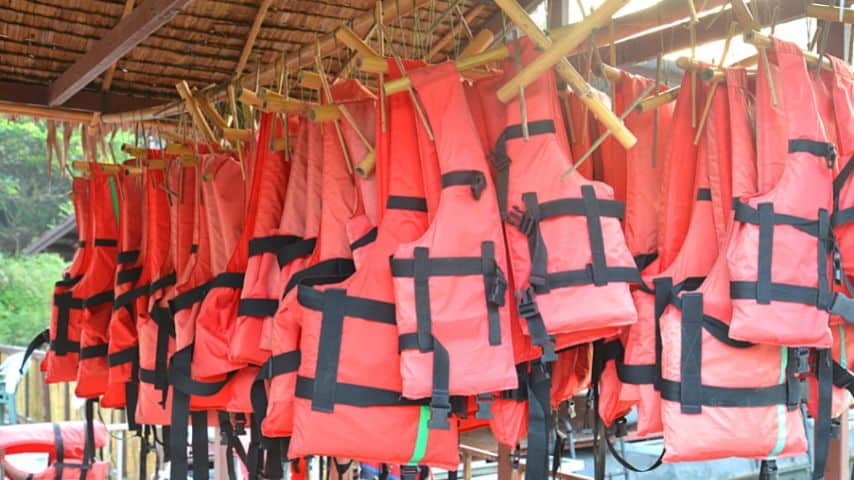
A simple measure like this one can make your PFD last longer.
4. Store PFD in a Ventilated Place
To prevent tears and rips, you should store your PFD in a place with sufficient ventilation.
Proper ventilation also ensures that the internal gear of PFD does not rot and deform.
Frequently Asked Questions about What to Do with Torn PFDs
When your PFD’s torn, when should you consider getting it replaced?
You should get rid of your PFD if it has suffered any UV damage, has deep tears and rips, and is no longer buoyant. These damages compromise its function; hence, it is of no use anymore and should be immediately replaced.
Can you repair a PFD?
Any superficial tears can be repaired with patches and duct tape. A PFD should be replaced in case of deep tears as its performance has diminished.
How to clean PFDs?
First, rinse your PFD with warm water thoroughly. Next, fill a bucket with cold water, mix in soap and soak your PFD. Gently the PFD with a soft-bristled brush, rinse with water and let it completely dry.
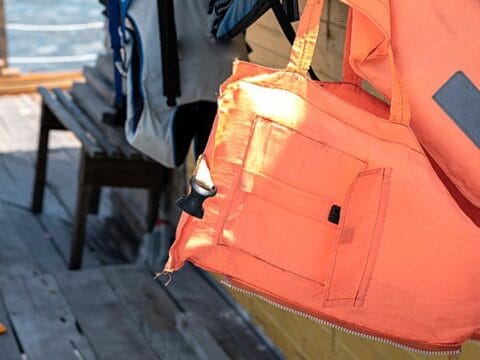

elavil and st john's wort
Friday 3rd of January 2025
elavil and st john's wort
elavil and st john's wort
cialis generic prices
Saturday 6th of January 2024
cialis generic prices
cialis generic prices